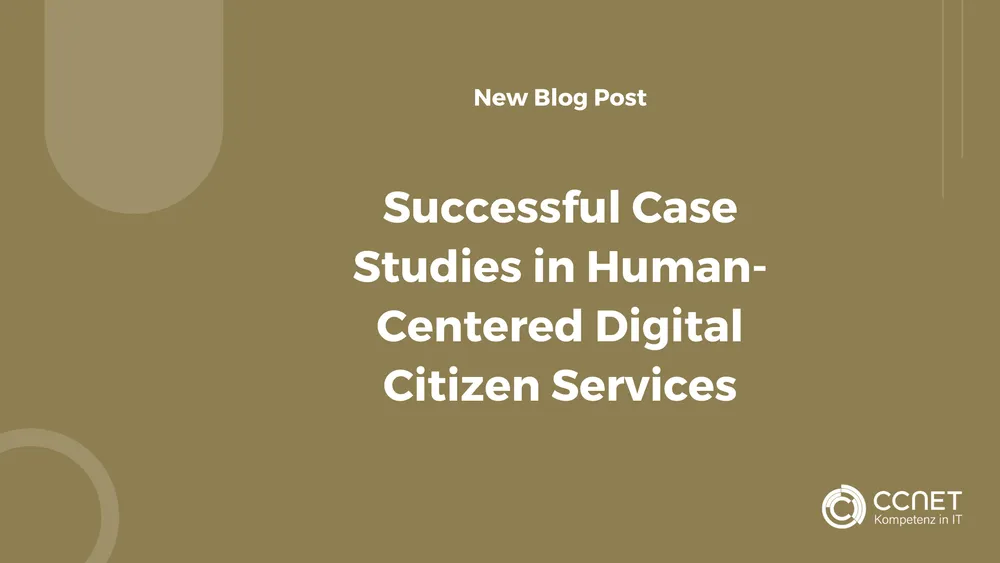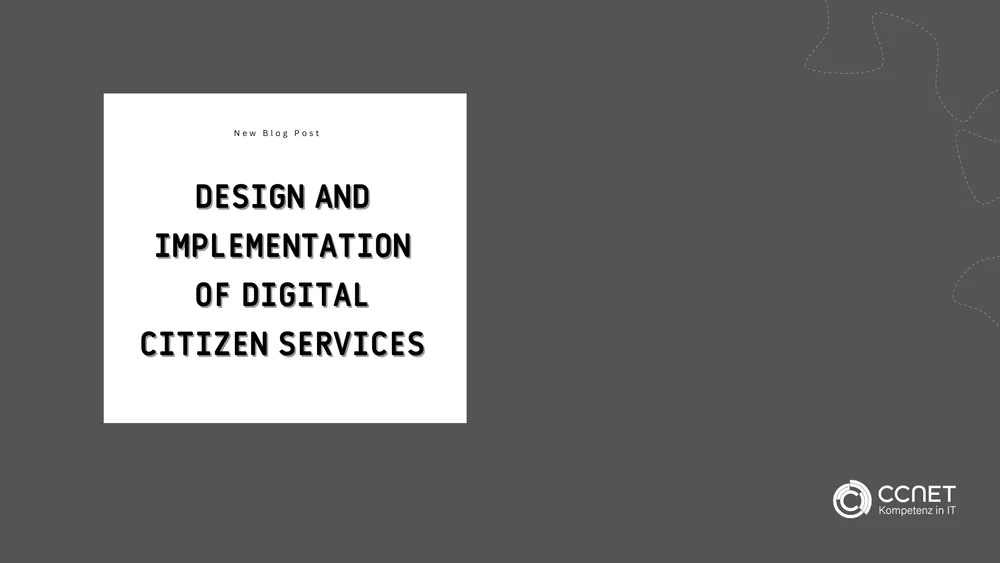
CCNet
Jun 10, 2024 • 2 min read

Managing Disruptions in Digital Communication Projects
In previous parts of this series, we've explored the basics of Human-Centered Design (HCD), the role of empathy and user understanding in the design process, and practical approaches to designing digital citizen services. This fourth part focuses on managing disruptions in digital communication projects. We'll examine typical disruptions in the design process and how to effectively manage them to ensure successful digital citizen services.
Further information can be found here: IT-Services
Typical Disruptions in the Design Process
Disruptions in the design process are common and can arise from various factors, including communication breakdowns, misunderstandings, external influences, or strategic issues. In the context of digital communication projects, disruptions can take the following forms:
-
Communication Problems: Lack of or unclear communication among project stakeholders can lead to misunderstandings and poor decisions. This can result in crucial information being lost or misinterpreted.
-
Strategic Conflicts: Different stakeholders may have conflicting goals, leading to internal project conflicts. This can delay the project or steer it in the wrong direction.
-
Resource Constraints: Public sector projects often face limited resources, which can cause shortages in budget, time, or personnel. This can significantly affect the project's progress.
-
External Influences: Factors like political changes, economic fluctuations, or social developments can impact the design and implementation of digital citizen services.
Strategies for Effective Disruption Management
To manage these disruptions, various strategies can be used to keep the design process on track and achieve successful outcomes:
-
Clear Communication and Transparency: Open and clear communication among all parties is essential to avoid misunderstandings. Regular meetings, clear documentation, and transparent decision-making can help minimize communication issues.
-
Stakeholder Management: Identifying and engaging all relevant stakeholders is crucial to avoid strategic conflicts. Effective stakeholder management can help align different interests and create a shared understanding of project goals.
-
Resource Planning and Flexibility: Careful resource planning is crucial to prevent bottlenecks. At the same time, it's essential to remain flexible and have backup plans to respond to unforeseen events.
-
Iterative Feedback and Adjustments: The HCD process is inherently iterative, allowing for continuous feedback and adjustments. Through regular testing and user engagement, designers can identify disruptions early and make appropriate adjustments.
Examples of Disruption Management in Digital Communication Projects
Effective disruption management can lead to successful digital citizen services. Here are some examples of successful strategies to manage disruptions in digital communication projects:
-
Coordinated Project Teams: By forming interdisciplinary project teams that cover various domains, disruptions due to communication gaps or lack of expertise can be reduced. This also promotes collaboration and a shared understanding.
-
Citizen Engagement: Actively involving citizens in the design process can help avoid disruptions caused by lack of acceptance or user understanding. Participatory design approaches and feedback loops can foster citizen engagement.
-
Adaptation to External Influences: By monitoring external influences and trends, designers can adjust their projects accordingly. Flexibility and the willingness to adapt the design process are crucial to respond to changing conditions.
Conclusion
Disruption management is a crucial aspect of successful digital communication projects. By developing effective strategies to manage disruptions, designers can ensure that digital citizen services are user-friendly, accessible, and successful. Clear communication, effective stakeholder management, and flexible resource planning are key to success. With the iterative nature of HCD, designers can continuously adjust and respond to feedback to minimize disruptions and design successful digital citizen services.


